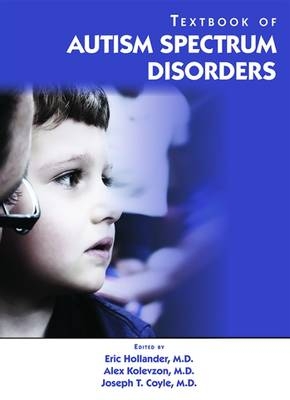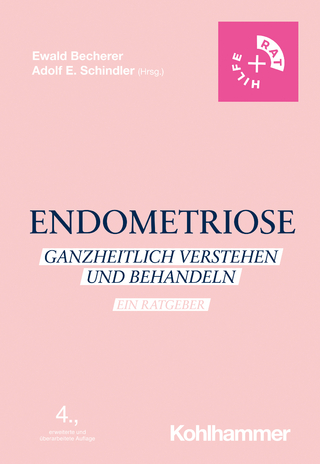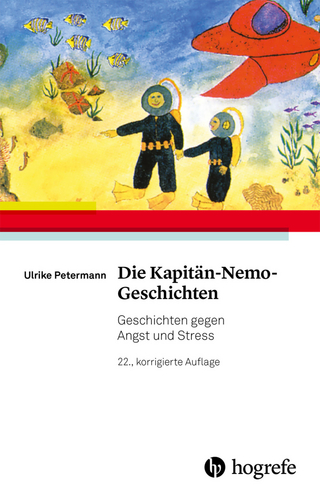
Textbook of Autism Spectrum Disorders
American Psychiatric Association Publishing (Verlag)
978-1-58562-341-9 (ISBN)
- Titel erscheint in neuer Auflage
- Artikel merken
An undertaking that is as ambitious in its scope as it is masterful in its presentation, Textbook of Autism Spectrum Disorders presents a comprehensive view of the history, etiology, diagnosis, pathophysiology, risk factors, and treatment of this multifaceted groups of disorders. Because more patients are being diagnosed with autism spectrum disorders than ever before, and at earlier ages, research initiatives have been established to address the most critical scientific questions in terms of biological markers, neuroimaging, and treatment efficacy. The resulting deluge of scholarship and research findings has made staying current in the field a daunting task.
To meet the challenge, the editors, among the foremost authorities in the field, have assembled experts from the full range of specialties that are critical to a comprehensive understanding of autism. They have drawn on their clinical experience and scientific knowledge to create this benchmark publication, which includes:
• A scientific history of autism, starting from its first identification by Kanner in 1943, that explores the competing theories of etiology and treatment up to the present day, in order to contextualize autism spectrum disorders, both scientifically and culturally
• Chapters on clinical evaluation that are presented within a cohesive multidisciplinary framework
• Thorough coverage of diagnostic testing and a review of the status of current research on biological markers that brings the reader up-to-date
• Chapters on risk factors, both perinatal and environmental, which help to identify areas of potential intervention
• Extensive coverage of experimental, novel, and alternative therapies, which may be helpful to patients and their families, as well as provide clinicians with valuable new treatment perspectives
• An impressively comprehensive section on treatment options to help clinicians develop cutting-edge skills.
The editors are well aware that a book of this kind could be intimidating, so they have included a number of features that make the text reader-friendly:
• A preface and introduction that help to introduce and contextualize the material
• Chapter concluding summaries, followed by condensed "Summary Points" that aid the reader in identifying and mastering the most critical information
• Liberal use of tables and figures that aid with identification of neurobiological and clinical features, differential diagnoses, drug comparisons, and more
The diversity and breadth of the material make this book an indispensable resource for psychiatrists, psychologists, neurologists, social workers, speech therapists, educators, and patients and their families as well.
Eric Hollander, M.D., is Clinical Professor of Psychiatry and Behavioral Sciences and Director of the Compulsive, Impulsive, and Autism Spectrum Disorders Program at the Albert Einstein College of Medicine and the Montefiore Medical Center, Bronx, New York. Previously, he was Esther and Joseph Klingenstein Professor and Chairman of Psychiatry and Director of the Seaver and New York Autism Center of Excellence at Mount Sinai School of Medicine. Alex Kolevzon, M.D., is Associate Professor of Psychiatry and Pediatrics and Clinical Director of the Seaver Autism Center for Research and Treatment in the Department of Psychiatry at Mount Sinai School of Medicine in New York, New York. Joseph T. Coyle, M.D., is the Eben S. Draper Professor of Psychiatry and Neuroscience at Harvard Medical School. Previously, he served as the Distinguished Service Professor of Child and Adolescent Psychiatry at Johns Hopkins School of Medicine in Baltimore, Maryland.
Foreword. Preface. Introduction. Part I: The Clinical Syndrome. Part IA: History. A selective scientific history of autism. Part IB: Assessment. Clinical evaluation of children with autism spectrum disorders. The autistic mind: the empathizing-systemizing theory. Evaluation and testing. Neurological assessment. Part IC: The Disorders. Asperger's syndrome. Pervasive developmental disorder not otherwise specified. Child disintegrative disorder. Rett syndrome. Incidence and prevalence of pervasive developmental disorders. Part ID: Target Symptoms. Social impairment. Development of language and communication. Disruptive behaviors. Restricted repetitive behaviors. Self-injury, aggression, and related problems. Associated symptoms. Sleep disorders. Comorbid disorders. Part II: The Causes. Part IIA: Etiology. Autism spectrum diagnoses in neurogenetic syndromes: phenocopies of autism? Parental and perinatal risk factors for autism. Environment and autism. Oxytocin, social cognition, and autism. Genomic architecture of autism spectrum disorders. Family studies of autism. Part IIB: Pathophysiology. The serotonin system in autism. The GABA system in autism. The glutamate system in autism. Role of reelin in autism. Neurotrophins and autism. Neuroligin and neurexins in autism. Part IIC: Neuroanatomy. Neuroanatomy of the brain in autism spectrum disorders. The amygdala in autism spectrum disorders. The cerebellum in autism spectrum disorders. Part IID: Imaging. Structural neuroimaging. Positron emission tomography. Functional magnetic resonance imaging. Part IIE: Immunology. The immune system and the neurobiology of autism spectrum disorders. Part III: The Treatments. Part IIIA: Pharmacological Treatments. Serotonin reuptake inhibitors and other serotonergic medications. Anticonvulsants and mood stabilizers. Antipsychotics. Treating hyperactivity in children with pervasive developmental disorders. Part IIIB: Alternative Treatments. Complementary and alternative therapies for autism. An experimental treatment for autism. Part IIIC: Behavioral, Educational, and Psychosocial Treatments. Applied behavior analysis. Educational approaches. Peer relationships: challenges and interventions. Part IV: Future Directions. Future Directions. Index.
| Erscheint lt. Verlag | 17.12.2010 |
|---|---|
| Zusatzinfo | 4 Illustrations, color; 5 Halftones, black and white; 22 Line drawings, black and white; 47 Tables, unspecified |
| Verlagsort | VA |
| Sprache | englisch |
| Maße | 216 x 279 mm |
| Gewicht | 1715 g |
| Themenwelt | Sachbuch/Ratgeber ► Gesundheit / Leben / Psychologie ► Krankheiten / Heilverfahren |
| Geisteswissenschaften ► Psychologie ► Entwicklungspsychologie | |
| Medizin / Pharmazie ► Medizinische Fachgebiete ► Neurologie | |
| Medizin / Pharmazie ► Medizinische Fachgebiete ► Psychiatrie / Psychotherapie | |
| ISBN-10 | 1-58562-341-5 / 1585623415 |
| ISBN-13 | 978-1-58562-341-9 / 9781585623419 |
| Zustand | Neuware |
| Haben Sie eine Frage zum Produkt? |
aus dem Bereich



